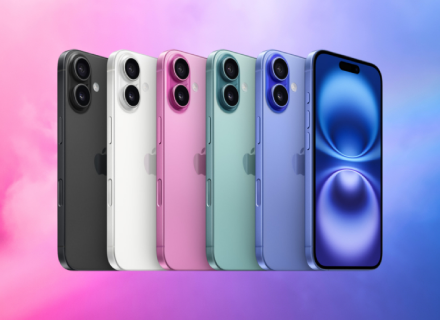To gain a competitive advantage in the 21st century technological scramble, Apple attempted to market the newest iPhone generation as devices designed around artificial intelligence (AI), positioning it as its biggest product event of the year.
The firm claims to have created the new iPhone 16 model “from scratch” for its “Apple intelligence” suite of AI features. These features include the ability to create and modify text to suit specific tones, as well as use the device’s camera to identify objects in the real world.
The event, which took place inside Apple’s Cupertino, California, headquarters, included the slogan “its glowtime” and the company’s emblem surrounded by a vibrant aura. The company’s leaders promoted a variety of new hardware and attempted to showcase the ways Apple was incorporating AI into its products with a series of high-production movies.
Tim Cook, the CEO of Apple, stated in a taped video during the event, “We are excited to announce the first iPhones designed from the ground up for Apple Intelligence and its groundbreaking capabilities.”
With the help of the company’s “Apple Intelligence” system, iPhones will be able to carry out several functions, such as text generation, picture editing, and object recognition with the camera. During a programme showcasing Apple Intelligence, Apple promised to be able to create unique emojis based only on cues like “cowboy frog.”
Additionally, users will be able to search through texts, emails, and photographs using AI features by audio-commanding the Siri voice assistant or typing in descriptions. Additionally, Apple unveiled an improved version of Siri, their voice assistant that integrates with ChatGPT, a well-known chatbot created by OpenAI, a company supported by Microsoft.
Next month, the company will offer a free software upgrade with its AI integrations for English-speaking consumers in the United States.
Along with a more durable display screen, the new iPhone 16 also promised a “bold new palette” of colours. The phone also includes a programmable “action button” and a new A18 chip for enhanced performance.
During the event, Apple also unveiled a new iteration of its AirPod headphones and a redesigned Apple Watch with a larger screen, quicker charging, and health app capabilities like sleep tracking. For those with mild to moderate hearing loss, the AirPods Pro 2 now can operate as a hearing aid.
Since it usually features several new products and sets the tone for the holiday shopping season, which is Apple’s busiest and most lucrative time of year, the company’s fall product launch has grown to be one of its most significant yearly events. The tech industry and the company’s supporters frequently engage in intense conjecture around these new goods.
Before the event, there were a lot of speculations circulating about Apple switching from LCD to OLED screens and about a dedicated photo button. Early reports on the occasion also included predictions that the tech behemoth would enhance its AI “Apple Intelligence” capabilities.
AI Push Amid Headwinds
At the Worldwide Developers Conference (WDC) earlier 2024, Apple revealed several ways it planned to incorporate AI technologies into its goods and services. Executives promised a more “natural” manner of contact when they revealed one of the biggest announcements of the conference: collaboration with OpenAI to integrate ChatGPT technology with Apple’s Siri voice assistant.
Apple underwent a sea change with its WWDC presentations, promising to integrate more AI. The company has delayed releasing consumer-facing AI capabilities for longer than rivals like Microsoft. Investors and analysts who were waiting for the corporation to produce its version of the technology have previously become frustrated with the company’s reluctance to deploy new generative AI features.
The market’s enthusiasm for generative AI and growing revenue has aided big tech stocks, resulting in a significant increase in Apple’s share price in 2024. But in recent years, the corporation has battled with a global decline in smartphone sales as well as the emergence of competitors like Huawei in important areas, most notably China.
The Department of Justice’s massive antitrust lawsuit against Apple, which claims the firm created and upheld an unlawful monopoly over the smartphone market, is another issue that is looming large in the background. The case, which may take years to resolve, sees Apple rejecting the charges.
Apple’s renewed focus on AI coincides with growing competition for the iPhone in China, particularly from Huawei, as users expect more AI-powered capabilities. Notably, Huawei had planned to introduce its device a few hours after Apple’s gathering. However, Beijing still needs to approve Apple Intelligence’s release in China. The latest move by OpenAI to restrict access to ChatGPT in China may make it more difficult for Chinese users to integrate AI into Siri.
With the iPhone accounting for over half of Apple’s USD 383 billion in sales in 2023, the device remains a major source of income for the company. Despite a decline in iPhone sales, the company is relying on the AI-enabled iPhone 16 to persuade customers to upgrade. Apple lowered its prices in China earlier this year due to increased local competition and government regulations.
With a focus on AI technologies, the iPhone 16 will be the first device in Apple’s portfolio. However, the iPhone 15 Pro and Pro Max models will also have access to many of these features. Apple’s AI initiative coincides with rivals such as Google, the company behind the Android operating system, which places a strong emphasis on AI in its products.
Google has unveiled new AI features for Android-based smartphones, such as those from Motorola and Samsung, and demonstrated its AI assistant, Gemini Live. To avoid Apple’s iPhone announcement, Google even pushed back the release date of its Pixel smartphone to August. Apple has postponed its European launch to comply with the European Union’s tech regulations, but it still intends to launch Apple Intelligence in the United States this fall.
A18 Chip & Other Features
Meanwhile, Arm’s most recent V9 chip architecture, owned by SoftBank, was used in the development of Apple’s A18 processor, which is expected to be used in the iPhone 16. Because Arm chips have low power consumption, they are ideal for mobile devices and power the majority of smartphones around the world. Apple and Arm have been collaborators since the early 1990s, which has allowed Arm to establish itself as a pioneer in mobile chip design.
A better camera sensor layout will be possible with the iPhone 16’s pill-shaped camera module, which has main and ultrawide lenses oriented vertically. A new “Capture” button will also make it possible to quickly take pictures or videos, and an “Action” button, which was previously only available on Pro models, should improve personalisation. The gadget will have an aluminium frame with colour-infused glass on the rear, providing durability and style along with an IP67 water-resistant rating. Purple and white are the other two new colour options that the iPhone 16 will offer.
A 12MP ultrawide lens with a 120-degree field of view and a 48MP primary sensor will be part of the dual camera arrangement. While Apple’s upgraded image-processing technology will guarantee amazing results with advanced noise reduction and HDR performance, the improved f/2.2 aperture will produce brighter low-light shots. A 12MP front camera will be available for crisp selfies.
The 6.1-inch OLED display on the upcoming iPhone 16 will have Super Retina XDR and Dynamic Island technologies for brilliant images. The ceramic shield protection will increase durability, and micro-lens technology will improve brightness while using less battery power. With the help of the A18 chip’s intelligent battery optimisation, a 3,561 mAh battery should provide up to 20 hours of video playback and more than 80 hours of music playback.
It’s clear that with the introduction of the iPhone 16 and its focus on incorporating artificial intelligence features, Apple is aiming to position itself at the forefront of technological innovation. The emphasis on AI capabilities, from text generation to picture editing and object recognition, showcases Apple’s commitment to integrating cutting-edge technology into its products.
Moreover, the unveiling of the new AirPods and Apple Watch with enhanced features further solidifies Apple’s dedication to offering a comprehensive ecosystem of interconnected devices. The simultaneous release of AI-centric products dovetails with the company’s strategic efforts to appeal to a global audience and maintain its competitive edge in the marketplace.
The collaboration with OpenAI to integrate ChatGPT technology with Siri, on the other hand, reflects Apple’s continued efforts to enhance user experiences through advanced AI functionalities. The technological advancements, including the A18 chip and upgraded camera system on the iPhone 16, demonstrate Apple’s ongoing pursuit of delivering state-of-the-art hardware to its customer base.
As Apple navigates challenges such as global smartphone sales decline and increased competition, the company’s renewed focus on AI serves as a strategic response to evolving consumer demands. By leveraging AI-powered capabilities, Apple aims to captivate consumers and reaffirm its position as a pioneering force in the technological landscape.

